At first, changing a record mat can seem like a mere aesthetic upgrade. After all, can the material between your records and the turntable platter really make a difference to the sound?
The truth is, everything affects the sound when it comes to a physical format like vinyl!
Choosing the right turntable mat can make a significant difference to the performance of your setup, helping to enhance certain characteristics while controlling unwanted resonance.
To help you pick the best option for your personal taste, we’ve compiled a list of the best turntable mats available.
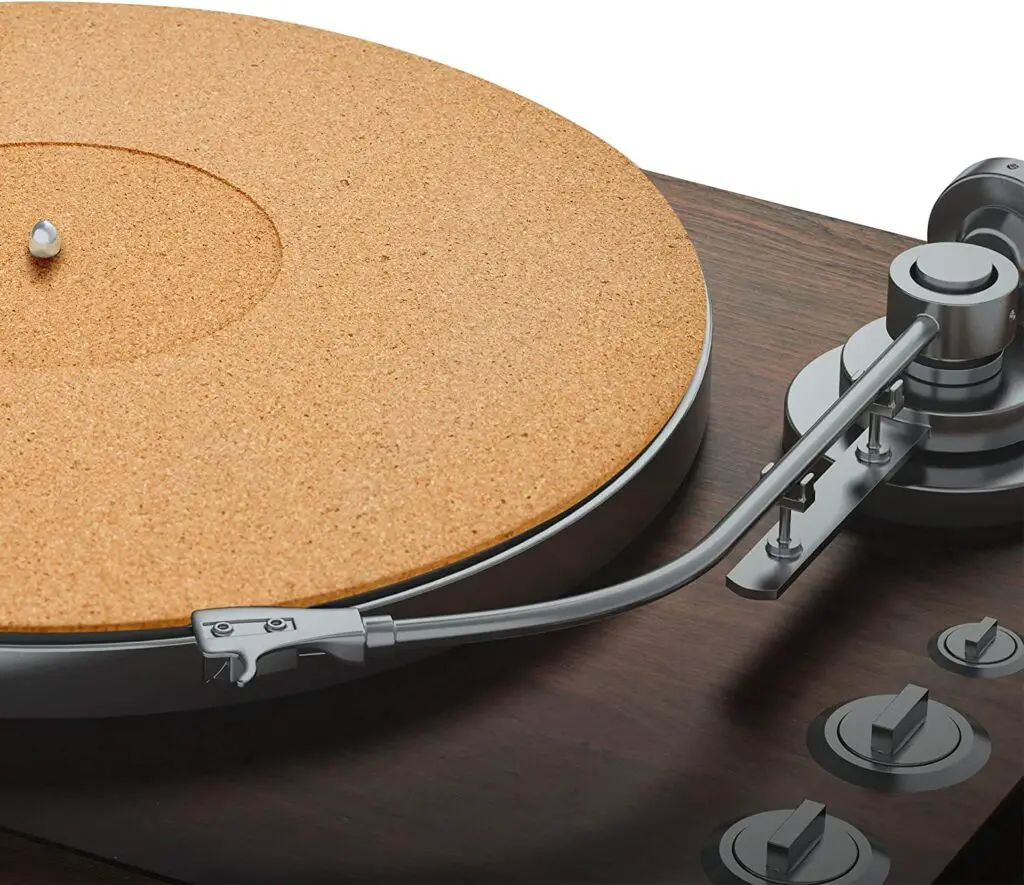
Cork Turntable Mat
Cork is an affordable upgrade from the standard felt or rubber mats that ship with many turntables. Cork does a good job of controlling static and unwanted resonances. Compared with cheap felt mats, the sound is tighter and more focused.
The best cork mats have an indent to house the record label, which protrudes from the surface slightly. By allowing for the label, the record can lay nice and flat for improved contact.
Pros: Unique sound quality | Great retro look | Inexpensive upgrade
Cons: Can still hold a static charge and stick to your records
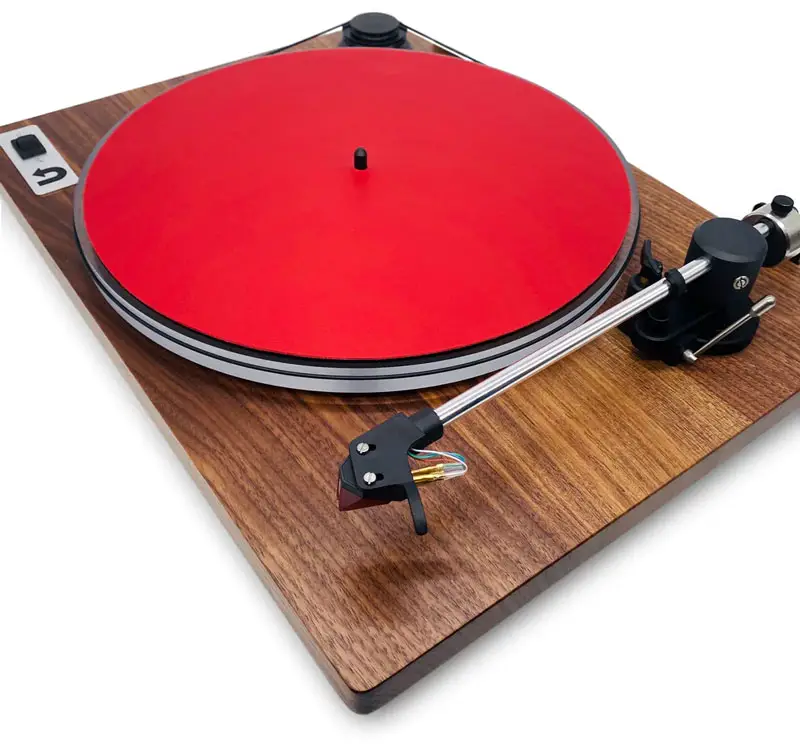
Leather Turntable Mat
Leather is an attractive turntable mat option that offers a significant upgrade to felt at an affordable price. While its vibration absorption properties are lower than some options on the market, leather has the distinct advantage of not holding any static charge.
GrooveWasher stocks a beautiful leather platter mat made by the artisan leather company Hide in the Sound. The deep red finish adds a splash of color and class to any deck. (Use the code SOUNDMATTERS10 to get 10% off at their website).
Pros: Attractive alternative to cheap felt mats | Does not hold a static charge | Ultra-soft and kind on your records | Easy to clean
Cons: Minimal dampening qualities
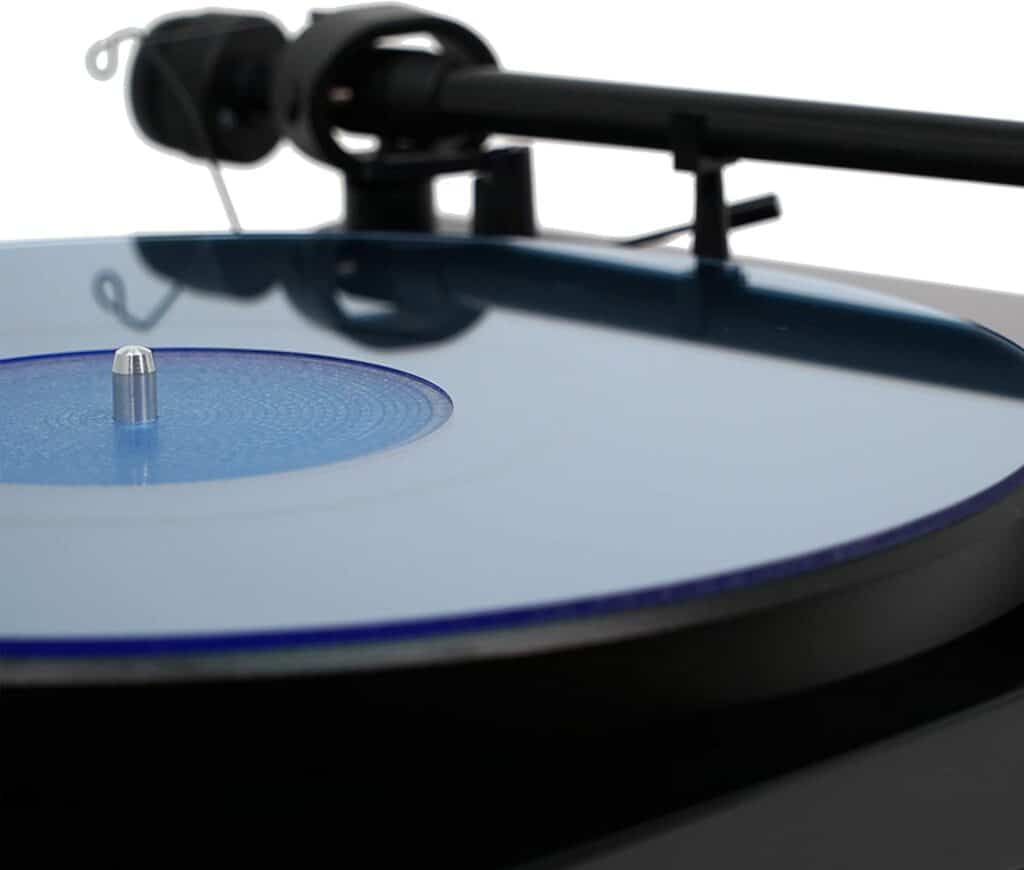
Hudson HiFi Acrylic Turntable Mat
Many audiophiles consider acrylic one of the best materials for controlling resonance. When you place a record onto acrylic, the record is effectively “coupled” with the playing surface, and this helps to further control resonance.
The theory is, because the two surfaces are so similar in material characteristics, resonance generated by the stylus when tracking the groove can more easily dissipate away from the record and into the acrylic. The result? A cleaner, less clouded soundstage.
Pros: Cost-effective alternative to acrylic platters | Great resonance control and anti-static properties | Improved audio performance compared with felt, rubber or cork
Cons: Needs to be shipped carefully to avoid warping
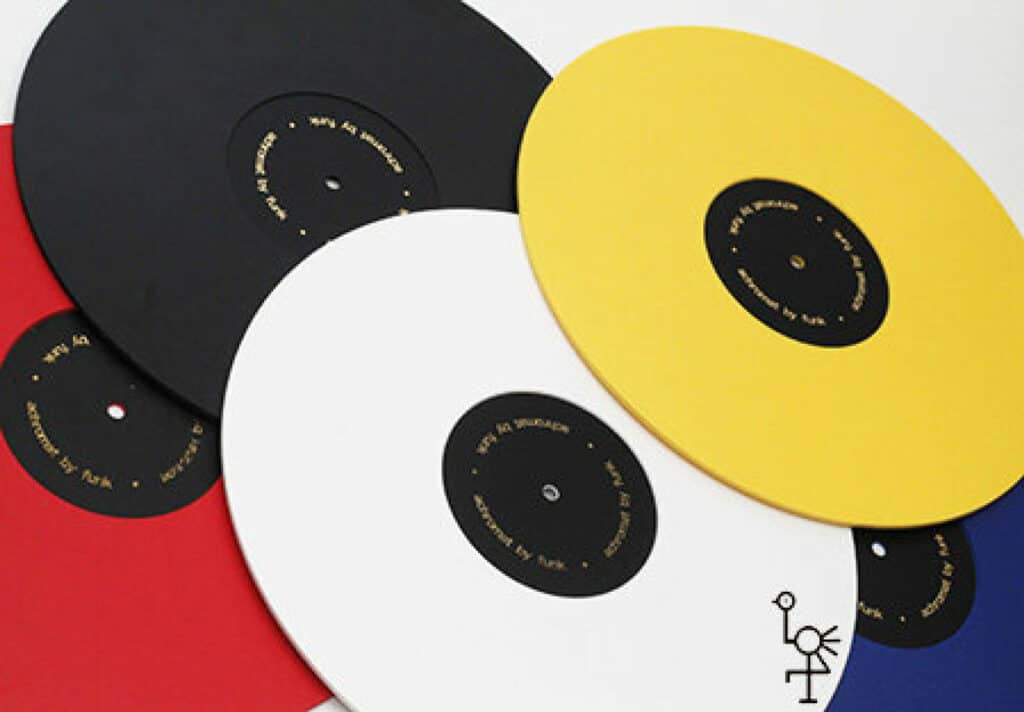
Funk Firm Achromat
The Achromat by Funk is a further development of the acrylic platter concept.
Similarly to acrylic mats and platters, the Achromat also allows stylus vibration to dissipate away from the record and stylus, but in this instance, the dissipation is aided further by adding a complex internal construction of microscopic tunnels where vibration energy is rapidly diffused.
The Achromat comes in 3mm and 5mm thickness options; the latter has better performance but will require you to adjust the VTA (vertical tracking angle) of your turntable tonearm to allow for the extra height. Check out our full review.
Pros: Excellent resonance control | Focused, accurate sound | Very reasonably priced turntable upgrade
Cons: Some double-sided tape may be required to prevent slipping | Could be prone to warping if stored or shipped incorrectly
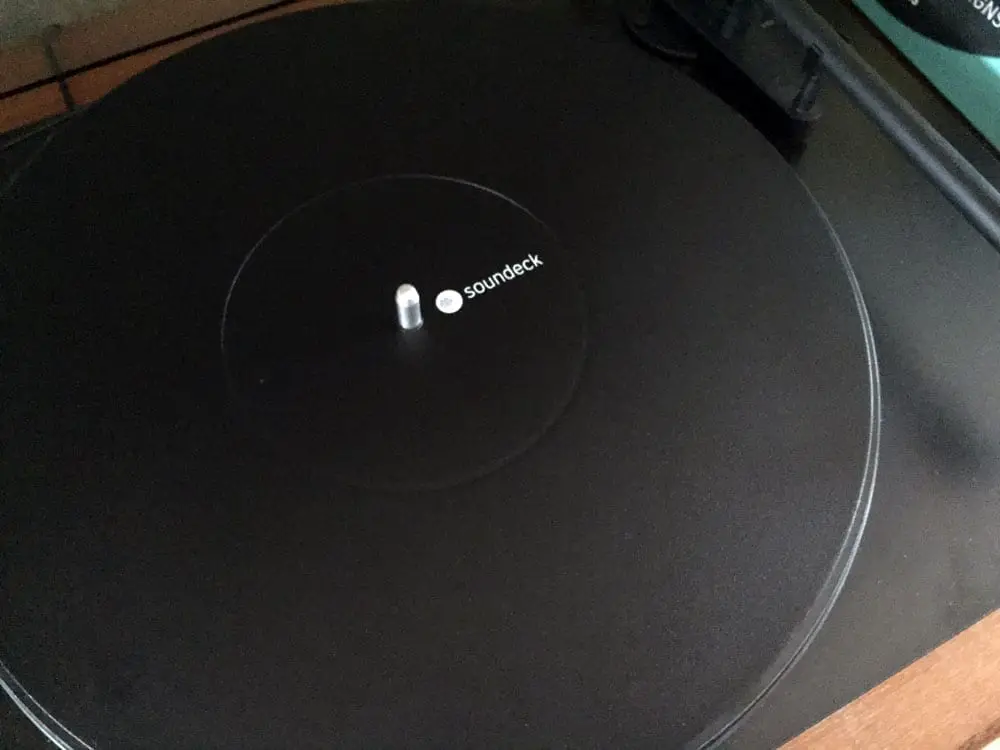
Soundeck – Sound-Damped Steel
A metal turntable mat might seem like an odd choice, but not in the case of this clever design from Soundeck. Unlike metal platters, which are notoriously resonant, the Soundeck platter mat made from sound-damped steel is very effective at taming turntable and stylus resonance.
The Soundeck is a sandwich of steel and aluminum bonded together with a polymer. Vibrations make the plates stretch and contract the polymer, turning said vibrations into a tiny amount of heat energy. Check out our full review.
Pros: Excellent resonance control and elevated sound quality | Sturdy construction
Cons: Some double-sided tape may be required to prevent slipping
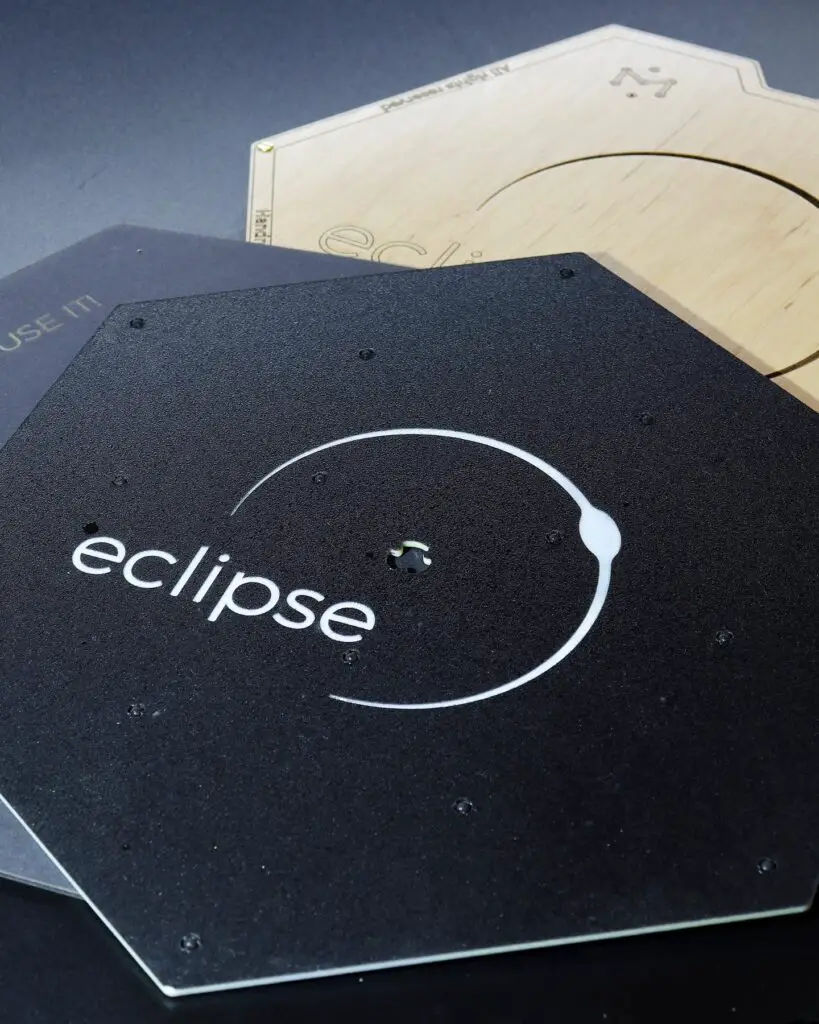
HEXMAT Eclipse
While most turntable mats focus on dampening and controlling resonance by coupling the record to the platter or mat as closely as possible, The HEXMAT Eclipse works on the exact opposite theory.
The Hungarian-designed Eclipse turntable mat has a contact surface area as low as 1-2 square millimeters thanks to its special embedded spheres. These tiny spheres effectively elevate the record while still delivering full torque transfer from the rotating platter to the record.
The HEXMAT is the best turntable mat we’ve tested for lowering the noise floor caused by the mechanics of vinyl playback. Check out our full review.
Pros: Very low noise floor | Prevents contamination of dust from one record to another | Full torque transfer thanks to excellent grip of the platter and record, respectively
Cons: Pricey compared with competitors | Looks less attractive on metal Technics style platters
Best Turntable Mats – The Bottom Line
All turntable mats have pros and cons and will deliver a unique sound character. Controlling resonance and improving the tracking process are the main performance benefits that will elevate the sound of your records. That being said, “good sound” is so subjective that it’s important to listen carefully and make your own mind up when choosing to upgrade any aspect of your deck.
Higher-end mats with advanced resonance control are ideal if you can stretch your budget, but even a humble cork mat will elevate your setup if you’re starting from a basic felt mat.
To learn more about how different platter mat materials affect the sound of your turntable, check out our full guide.

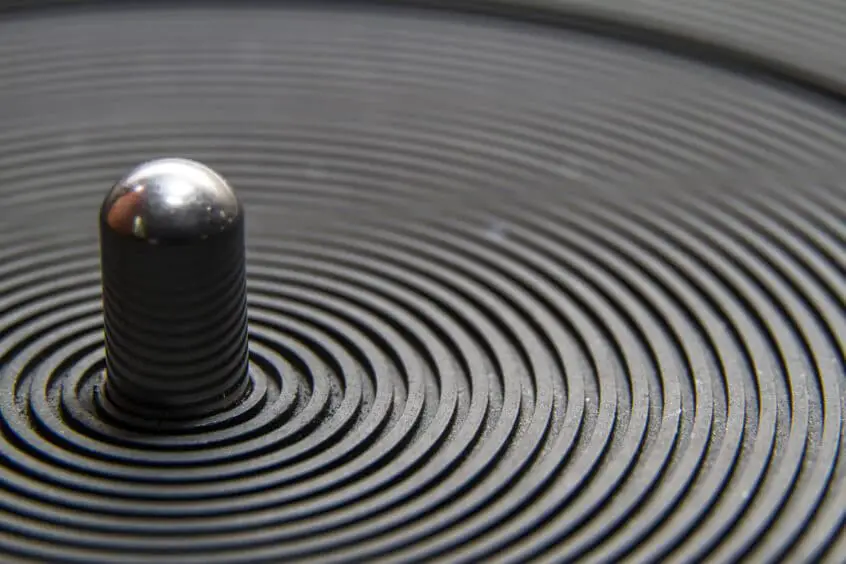


I have a Pink Triangle LPT which has a fairly heavy acrylic platter as standard and have been thinking about a slip mat, I have been thinking about the achromat, but not sure how much of an upgrade it would be, worth it or just leave it as is?
I’ve used a cork mat to replace a original rubber mat on my panasonic sl-h401 turntable.
With the rubber mat, I was hearing resonance and a buzzing noise from the motor of the turntable (being a direct drive turntable)
Now that I’ve upgraded to cork, it definitely changes the game. My records are holding onto the mat which prevents slipping and damage to my records, and I don’t hear the buzzing or resonance anymore.
Definitely fixed a direct drive problem for me. Now I’ve got one of the cheapest build ever but can listen to some high quality music without having to care about changing a belt or get bothered by the buzzing sound of a direct drive motor.
That was very interesting
I’m not an expert at this stuff, in fact, my turntable is a rather old midlevel one from the 70s, called a Rotel RP1000. Originally it came with a rubber mat, I replaced it some time ago with a cork mat, between those two I really could not hear any difference I could pinpoint, I felt I wasted my money on the cork. Then a year ago I decided to try the Hudson Acrylic mat since it was on sale, am I glad I bought that mat, the surface noise is all but gone, the records have a more accurate warmth to them, and the lows are much better, and the highs are clearer, and the mid range and vocals seem more detailed. At this point I doubt going to a more expensive option would be worth the extra cost.
Rather than replace, I’ve had much success with a very thin (1/16″) carbon fibre slip mat placed right on top of the stock rubber mat that came with my turntable. Apart from eliminating static altogether, the combination is musically pleasing. And VTA was not affected due to the thinness of the carbon fibre mat. Cheers.
Hi Paul, would appreciate a product identifier on your carbon fibre slip mat. Have searched your specs unsuccessfully.
Regards
Daniel